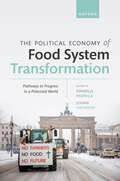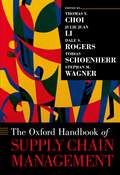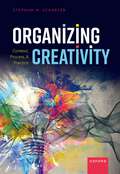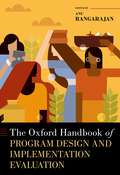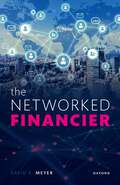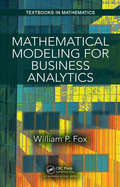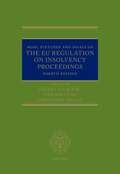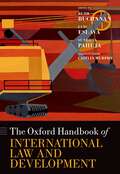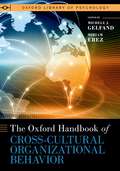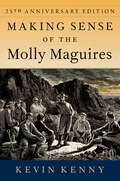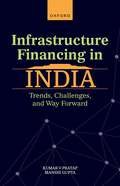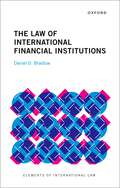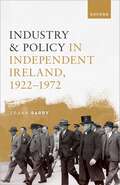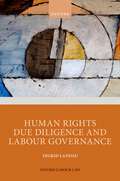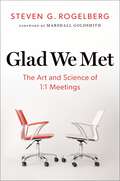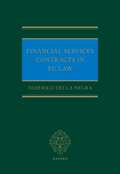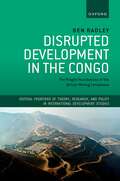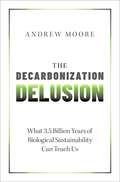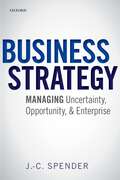- Table View
- List View
The Political Economy of Food System Transformation: Pathways to Progress in a Polarized World
This is an open access title available under the terms of a CC BY-NC 4.0 International licence. It is free to read at Oxford Academic and offered as a free PDF download from OUP and selected open access locations. The current structure of the global food system is increasingly recognized as unsustainable. In addition to the environmental impacts of agricultural production, unequal patterns of food access and availability are contributing to non-communicable diseases in middle- and high-income countries and inadequate caloric intake and dietary diversity among the world's poorest. To this end, there have been a growing number of academic and policy initiatives aimed at advancing food system transformation, including the 2021 UN Food Systems Summit, the Sustainable Development Goals (SDGs), and several UN Climate conferences. Yet, the policy pathways for achieving a transformed food system are highly contested, and the enabling conditions for implementation are frequently absent. Furthermore, a broad range of polarizing factors affect decisions over the food system at domestic and international levels - from debates over values and (mis)information, to concerns over food self-sufficiency, corporate influence, and human rights. This volume explicitly analyses the political economy dynamics of food system transformation with contributors who span several disciplines, including economics, ecology, geography, nutrition, political science, and public policy. The chapters collectively address the range of interests, institutions, and power in the food system, the diversity of coalitions that form around food policy issues and the tactics they employ, the ways in which policies can be designed and sequenced to overcome opposition to reform, and processes of policy adaptation and learning. Drawing on original surveys, interviews, empirical modelling, and case studies from China, the European Union, Germany, Mexico, South Asia, sub-Saharan Africa, and the United States, the book touches on issues as wide ranging as repurposing agricultural subsidies, agricultural trade, biotechnology innovations, red meat consumption, sugar-sweetened beverage taxes, and much more.
The Musician's Journey: Crafting your Career Vision and Plan
by Jill TimmonsThe Musician's Journey escorts musicians, performing artists, music teachers, and advanced music students along the road toward a successful career, offering a vast array of resources to guide them from envisioning the process to achieving the practical details. Jill Timmons provides key tools throughout the journey, from sources as diverse as the world of myth to current brain research, which illuminate compelling real-world examples of music entrepreneurs who forged their own paths to success. In addition to chapters on careers in higher education, guidance in how to develop a dynamic business plan, and effective time management, this expanded second edition includes up-to-date strategies for meeting the challenges of today's current marketplace, including a greatly expanded section on grant writing and financial development. The new edition also offers a new collection of diverse and inspiring stories taken from interviews with a range of successful musicians, along with personal narrative from the author's work as a professional musician and consultant. There is also an extensive bibliography of additional resources, and the companion website offers downloadable worksheets and questionnaires to assist the reader in igniting their own thriving musician's journey.
The Oxford Handbook of Supply Chain Management (Oxford Handbooks)
Supply chain management contends with structures and processes for delivering goods and services to customers. It addresses the core functions of connected businesses to meet downstream demand. This innovative volume provides an authoritative and timely guide to the overarching issues that are ubiquitous throughout the supply chain. In particular, it addresses emerging issues that are applicable across supply chains--such as data science, financial flows, human capital, internet technologies, risk management, cyber security, and supply networks. With chapters from an international roster of leading scholars in the field, the Oxford Handbook of Supply Chain Management is a necessary resource for all students and researchers of the field as well as for forward-thinking practitioners.
Organizing Creativity: Context, Process, and Practice
by Stephan M. SchaeferCreativity is a defining feature of contemporary work life. Who has not taken part in brainstorming sessions, read glossy pamphlets about innovation and creativity as important cornerstones of a new business strategy, or been made aware of the importance of creative skills for one´s career? But what does it mean to be creative in and as an organization? Organizing Creativity provides an answer to this question. The book builds on the premise that creativity is essentially about ideas. Every organization is dependent on valuable ideas for solving everyday problems as well as inventing new processes, products or services. The main argument of the book is that an analysis of organizational creativity should always account for the interdependency of context, process and practice. Based on cultural and processual perspectives, it highlights the implications of context, process and practice for different aspects of the creative process: generating, evaluating and facilitating ideas. Furthermore, it reflects on how dominant notions of creativity in the economy and society prevent transformative changes and suggests a radical transformative approach to organizing creativity as an alternative. To support and illustrate its argument, Organizing Creativity draws on abundant empirical examples, case illustrations and seminal research from Sociology, Social Psychology and Organization Studies. It provides us with a multi-dimensional perspective and will both further our understanding of and spark critical reflection on the complex interplay of the organizational, social and cultural contexts, processes and practices of organizing creativity.
The Oxford Handbook of Program Design and Implementation Evaluation
by Anu RangarajanWhy do many social programs have such a poor track record? What can we do to maximize a program's chance of success? If a program shows promise, how can we scale it up? To answer these questions confronting policymakers, and to ensure that strong programs are designed, developed, implemented, and taken to scale, appropriate evaluation approaches must be used throughout a program's life cycle. In The Oxford Handbook on Program Design and Implementation Evaluation, Dr. Anu Rangarajan surfaces insights and expertise from a team of eminent scholars to create a comprehensive and actionable toolbox of evaluation methodologies that can be used to examine social programs throughout their life cycle. The methodologies presented in the Handbook describe how to conduct developmental evaluations, perform rapid-cycle evaluations, employ implementation science concepts, assess program effectiveness in the absence of a true counterfactual, measure cost-effectiveness, scale up promising interventions, and assess systems change. Incorporating these approaches at every stage of a program's life cycle will maximize its chances of success; doing so consistently across social programs will help improve their impact overall. This Handbook is an action-oriented primary resource for social researchers, faculty and students, program practitioners, policy analysts, and funders of social programs and evaluations. By providing real-world examples of each approach alongside methodological guidance, and by highlighting challenges and lessons learned, the Handbook is invaluable to novices and seasoned professionals alike.
The Networked Financier
by David R. MeyerThe Networked Financier offers an explanation of the individual network behaviour of major financiers across diverse sectors and leading global financial centres. It argues that experienced financiers leverage their social capital to operate as 'networked financiers'. The few prior studies of the network behavior of individual financiers typically focus on one sector or on one financial centre. This book draws on Meyer's unique database of digitally recorded personal interviews with 167 financiers in London, Zurich, New York, Hong Kong, Singapore, Shanghai, Beijing, and Mumbai. They work in the sectors of corporate and investment banking, hedge funds, private equity, venture capital, fund management, real estate investment, insurance, and private banking. Extensive quotes are the mechanism for financiers to explain how they behave. Social network theory provides the lens for interpreting that behavior. The results demonstrate the validity of the theory for explaining financier network behavior. The book also contributes to a practical understanding of how financiers behave in networks because the interviewees explain their behaviour in their own words. By revealing the network behavior of leading financiers in major global business centres, the book provides a template about how sophisticated financiers behave.
Mathematical Modeling for Business Analytics (Textbooks in Mathematics)
by William P. FoxMathematical Modeling for Business Analytics is written for decision makers at all levels. This book presents the latest tools and techniques available to help in the decision process. The interpretation and explanation of the results are crucial to understanding the strengths and limitations of modeling. This book emphasizes and focuses on the aspects of constructing a useful model formulation, as well as building the skills required for decision analysis. The book also focuses on sensitivity analysis. The author encourages readers to formally think about solving problems by using a thorough process. Many scenarios and illustrative examples are provided to help solve problems. Each chapter is also comprehensively arranged so that readers gain an in-depth understanding of the subject which includes introductions, background information and analysis. Both undergraduate and graduate students taking methods courses in methods and discrete mathematical modeling courses will greatly benefit from using this book. Boasts many illustrative examples to help solve problems Provides many solutions for each chapter Emphasizes model formulation and helps create model building skills for decision analysis Provides the tools to support analysis and interpretation
Museum Worthy: Nazi Art Plunder in Postwar Western Europe
by Elizabeth CampbellArt looting is commonly recognized as a central feature of Nazi expropriation, in both the Third Reich and occupied territories. After the war, the famed Monuments Men (and women) recovered several hundred thousand pieces from the Germans' makeshift repositories in churches, castles, and salt mines. Well publicized restitution cases, such as that of Gustav Klimt's luminous painting featured in the film Woman in Gold, illustrate the legacy of Nazi looting in the art world today. But what happened to looted art that was never returned to its rightful owners? In France, Belgium, and the Netherlands, postwar governments appropriated the most coveted unclaimed works for display in museums, embassies, ministries, and other public buildings. Following cultural property norms of the time, the governments created custodianships over the unclaimed pieces, without using archives in their possession to carry out thorough provenance (ownership) research. This policy extended the dispossession of Jewish owners wrought by the Nazis and their collaborators well into the twenty-first century. The custodianships included more than six hundred works in Belgium, five thousand works in the Netherlands, and some two thousand in France. They included paintings by traditional and modern masters, such as Rembrandt, Cranach, Rubens, Van der Weyden, Tiepolo, Picasso, and Matisse. This appropriation of plundered assets endured without controversy until the mid-1990s, when activists and journalists began challenging the governments' right to hold these items, ushering in a period of cultural property litigation that endures to this day. Including interviews that have never before been published, Museum Worthy deftly examines the appropriation of Nazi art plunder by postwar governments and highlights the increasingly successful postwar art recovery and restitution process.
Moss, Fletcher and Isaacs on The EU Regulation on Insolvency Proceedings
The last decade has seen considerable changes in the main Regulation on cross-border insolvencies in the EU, the EU Regulation on Insolvency Proceedings (EIR). Many of those changes have been fundamental, including the application of the Recast EIR and the departure of the United Kingdom from the European Union. As EU law and its effect on member-states changes, Moss, Fletcher and Isaacs on the EU Regulation on Insolvency Proceedings remains the guide for legal precedents while including new developments in the field. Each edition of this seminal work has served as a practical tool for lawyers and students alike, being widely cited within the EU and domestic courts. This fourth edition includes a new Chapter dealing with the impact of the UK's departure from the EU on insolvency proceedings in the UK. It also examines new case law from the European Court of Justice (ECJ), including iUB v VA (exclusive jurisdiction under Insolvency Regulation), Silverira v Espirito Santo (Article 15 - effect on lawsuits pending), and Wiemer & Trachte GmbH v Tadzher (Article 6 - jurisdiction re avoidance actions). An invaluable resource for practitioners and academics alike, this updated volume provides an expert commentary on the evolution in the EIR- which will be useful to lawyers not only within the CJEU but in all 27 member states as well.
The Oxford Handbook of International Law and Development (Oxford Handbooks)
by Ruth Buchanan Luis Eslava Sundhya PahujaSince the mid-twentieth century, 'international law' and 'international development' have become two of the most prominent secular languages through which aspirations about a better world are articulated.. They have shaped the both the treatment and self-understanding of the 'developing' world, often by positing the West as a universal model against which developing states, their citizens, and natural environments should be measured and disciplined. In recent years, however, critical scholars have investigated the deep linkages between the concept of development, the doctrines and institutions of international law, and broader projects of ordering at the international level. They have shown how the leading models de-radicalise, if not derail, initiatives to redefine development and pursue other forms of global well-being. Bringing together scholars from both the Global South and the Global North, the contributions in this Handbook invite readers to consider the limits of common normative and developmentalist assumptions. At the same time, the Handbook demonstrates how disparate but still identifiable set of ideas, imaginaries, norms, and institutional practices - related to law, development and international governance - shape today's profoundly unequal material conditions, threatening the future of human and nonhuman life on the planet. The book focuses on five distinct areas: existing disciplinary frameworks, institutions and actors, regional theatres of international law and development, competing social and economic agendas, and alternative futures. Offering a unique overview of the field of international law and development and assembling major critical, historical, and political economic insights, this Handbook is an unmissable resource for scholars of international law, international relations, development studies, and global history, as well as anyone interested in the past, present, and future of our world.
The Oxford Handbook of Cross-Cultural Organizational Behavior (OXFORD LIBRARY OF PSYCHOLOGY SERIES)
The process of globalization has brought into focus the central role of culture in understanding work behavior. In parallel to the accelerating process of globalization, there has been an explosion of empirical studies on culture and organizational behavior. The Oxford Handbook of Cross-Cultural Organizational Behavior integrates this research into one coherent framework with a rich collection of chapters that highlight the role of culture at the multi-levels of the organization, from the individual level to the meso-level of the social group, the macro-level of the organization, and up to the global work culture. Written by a diverse group of experts in the field, this handbook provides critical knowledge on how cultures vary, and how culture influences basic psychological processes, communication, trust, social networks, leadership, and negotiation. It also covers how to manage multicultural teams, culture and human resource management practices, joint ventures, organizational change, and more. In order to be effective in the emerging global economy, managers need to be able to interact effectively across cultures, and this handbook provides the most comprehensive treatment of the subject on the market.
Market Liquidity: Theory, Evidence, and Policy
by Thierry Foucault Marco Pagano Ailsa R?ellThe way in which securities are traded is very different from the idealized picture of a frictionless and self-equilibrating market offered by the typical finance textbook. In Market Liquidity, Thierry Foucault, Marco Pagano, and Ailsa R?ell offer a more accurate take on the liquidity of securities markets, its determinants, and its effects. They start from the assumption that not everyone is present at all times simultaneously on the market, and that even the limited number of participants who are have quite diverse information about the security's fundamentals. As a result, the order flow is a complex mix of information and noise, and a consensus price only emerges gradually over time as the trading process evolves and the participants interpret the actions of other traders. Thus, a security's actual transaction price may deviate from its fundamental value, as it would be assessed by a fully informed set of investors. Market Liquidity takes these deviations seriously, and explains why and how they emerge in the trading process and are eventually eliminated. Drawing on the analytical tools and empirical methods from a well-defined field within financial economics--market microstructure--the authors confront many striking phenomena in securities markets, from liquidity changes over time to temporary deviations from asset fair values. In the fully revised second edition of Market Liquidity, Foucault, Pagano, and R?ell bring readers up to speed on recent changes in market structures and financial regulation. New chapters cover the relationship between financial instability and market liquidity, as well as the role and effects of algorithmic and high-frequency trading. Including new illustrative examples of market malfunction and novel insights from recent research on security markets, Market Liquidity provides a comprehensive and authoritative account on market microstructure.
Making Sense of the Molly Maguires: Twenty-fifth Anniversary Edition
by Kevin KennyTwenty Irish immigrants, suspected of belonging to a secret terrorist organization called the Molly Maguires, were executed in Pennsylvania in the 1870s for the murder of sixteen men. Ever since, there has been enormous disagreement over who the Molly Maguires were, what they did, and why they did it, as virtually everything we now know about the Molly Maguires is based on the hostile descriptions of their contemporaries. Arguing that such sources are inadequate to serve as the basis for a factual narrative, Kevin Kenny examines the ideology behind contemporary evidence to explain how and why a particular meaning came to be associated with the Molly Maguires in Ireland and Pennsylvania. At the same time, this work examines new archival evidence from Ireland that establishes that the American Molly Maguires were a rare transatlantic strand of the violent protest endemic in the Irish countryside. Combining social and cultural history, Making Sense of the Molly Maguires offers a new explanation of who the Molly Maguires were, as well as why people wrote and believed such curious things about them. In the process, it vividly retells one of the classic stories of American labor and immigration. In the twenty-fifth anniversary edition, a new preface reflects on the original work, immigration and labor history today, and the enduring memory of the Molly Maguires in American popular culture.
Infrastructure Financing in India: Trends, Challenges, and Way Forward
by Dr Kumar V PratapGovernments the world over want to spend more on infrastructure (the benchmark for developing countries is 7-8% of GDP per annum) to lay the foundation for sustained and inclusive growth. India is no exception. It realizes that more needs to be spent on infrastructure for the country to regain its position as the fastest growing large economy in the world. While India spent about 7.2% of its GDP on infrastructure during the Eleventh Plan period (2008-12), this number has recently come down to approximately 5%. The backdrop of the book is the ambitious National Infrastructure Plan (NIP); the Task Force report on the NIP was finalized in April 2020. Since infrastructure investment is crucial to faster and inclusive growth, it is timely that the NIP is actioned now, given that the Indian economy contracted to 7.3% in the financial year 2020-21. This book discusses various aspects of infrastructure financing in detail, with a major section devoted to green financing of infrastructure.
The Law of International Financial Institutions (Elements of International Law)
by Prof Daniel D. BradlowIn this new volume in the Elements series, Daniel D. Bradlow traces the history and development of international law and international financial institutions from 1918 to today, providing a detailed overview of the legal frameworks within which such institutions were established and operate, and which structure their relationships with their member states and their citizens. The book opens with the inter-war years, the Bretton Woods Conference, and background on the treaties establishing the IMF and the World Bank. It then discusses the Articles of Agreement of the IMF and the IBRD, providing information on their governance arrangements, mandates, and operating principles. The international legal status of these two international financial institutions, their international legal rights, responsibilities and obligations, and their privileges and immunities are also examined. In later chapters, the book explores how the structure, functions, and operations of the World Bank and IMF have evolved since their establishment and examines the regional development banks and the regional financial arrangements that were created after them. The book concludes by exploring the challenges that international financial institutions are currently facing, and the contributions that international law can make to help them successfully meet these challenges.
Industry and Policy in Independent Ireland, 1922-1972
by Prof Frank BarryThis book revisits the history of industry and industrial and economic policy in independent Ireland from the birth of the state to the eve of EEC accession. Though there were several manufacturing employers of significance, and smaller firms in operation in almost every major branch of industry, the Irish Free State was predominantly agricultural at its establishment in 1922. Industrial development was high on the nationalist agenda, as would be the case across the entire developing world in the later post-colonial era. Despite decades of protection, and a substantial increase in the size of the manufacturing sector, Ireland remained under-industrialised when it joined the European Economic Community in 1973. Over the previous decade and a half however the foundations of later convergence had been laid. Ireland was an early adopter of what would come to be known as dual-track reform. The policy of attracting outward-oriented foreign direct investment was initiated before substantial trade liberalisation began. By 1972 there had been a significant diversification in export categories and export destinations, and in the nationality of ownership of the leading manufacturing firms. Some of the most successful indigenous companies of the future were also beginning to emerge. In these and other respects the foundations of the economic progress that would be made over the course of EEC membership were already discernible, notwithstanding the post-accession collapse of most protectionist-era businesses. The analysis is supplemented by a unique firm-level database that allows for the identification of the leading manufacturing firms in operation at any stage from the early 1900s through to 1972. The database extends by more than 50 years the period for which estimates of the significance of foreign-owned industry can be provided.
Human Rights Due Diligence and Labour Governance (Oxford Labour Law)
by Ingrid LandauHuman rights due diligence (HRDD) has emerged as a dominant frame through which to conceptualise and operationalise responsible business conduct with respect to workers' rights in global supply chains. Legislation mandating HRDD is now found in several European countries and across various national regulatory agendas. Many scholars, practitioners, and activists are actively calling for further legalisation, believing that this will broaden respect for human rights. Yet to date, there has been little sustained scholarly analysis from a labour rights perspective. Observing that HRDD, as originally articulated in the UN Guiding Principles on Business and Human Rights, is open to multiple interpretations, this book examines global debates on the role and status of the concept. It also considers the implications of HRDD's ascension for transnational labour law as a distinct field of law, scholarship, and activism. Combining insights from transnational governance and business regulation with empirical analysis, this book argues that HRDD is not being institutionalised at either the global or national level in a way that renders it a transformative or even robust mechanism of transnational labour law. It also draws attention to the important, but largely overlooked, ways in which the rise of HRDD is leading to subtle shifts in the configuration of actors and institutions in labour governance.
Glad We Met: The Art and Science of 1:1 Meetings
by Steven G. Rogelberg"Steven Rogelberg knows more about how to improve meetings than anyone on earth." - Adam Grant, PhD, #1 New York Times bestselling author of Think Again and Hidden Potential, and host of the TED podcast WorkLife SHRM top 12 New Books * The Next Big Idea Club's January 2024 Must-Read Books There are an estimated 200-500 million 1:1 meetings held each day around the world, but are they run as transformatively as they could be? Or are they just talk? In Glad We Met: The Art and Science of 1:1 Meetings Dr. Steven Rogelberg, author of The Surprising Science of Meetings, helps us maximize the potential of these crucial conversations. 1:1s are arguably one of the most critical meeting types for the success of team members, managers, coaches, teams, and organizations. The best managers recognize that 1:1s are not an add-on to their role as a manager. Conducting 1:1s successfully are foundational to being a manager. At the same time, these meetings are the core of a direct report's experience and development at work, including how well they engage and attach to their role, perceive the effectiveness of their manager, and envision their future at the organization. Scouring the research and evidence collected over 20 years from managers and team members, and drawing on interviews with top leaders from some of the most respected companies in the world, Steven Rogelberg covers topics such as: ? Why effective 1:1s are critical to your success and the success of your team ? Messaging and positioning 1:1s for maximum value ? Finding the correct 1:1 cadence and meeting length to maximize positive impact without over-meeting ? Managing the intricate balance of productivity-building, relationship-building, and employee development ? Designing 1:1s with intentionality, from where to conduct the meeting to building agendas to optimize effectiveness ? Acting as leader coach and leveraging key skills around facilitation, listening, and feedback-giving ? How to personalize your 1:1 approach to fit you and your direct reports - one size does not fit all Glad We Met will make managers and direct reports walk away from every 1:1 energized more than any other moment of their workweek and with enduring impact.
The Future of the Factory: How Megatrends are Changing Industrialization
by Jostein HaugeFor centuries, industrialization and factory-based production have been core ingredients in economic growth, development, and innovation. This symbiotic relationship between industrialization and economic prosperity is now changing. 'Megatrends' - trends within the domains of technology, economy, society, and ecology that have a global impact - are changing the ability of the manufacturing sector to serve as the engine of growth, changing traditional ideas of technological progress, and changing growth and development opportunities in both the global South and the global North. Four megatrends are particularly worthy of note: the rise of services, digital automation technologies, globalization of production, and ecological breakdown. In this book, Jostein Hauge provides a novel analysis of how these megatrends are changing industrialization, and charts new pathways for industrial policy and global governance. He also offers a wide-ranging account of the role of technology, globalization, and ecology in shaping the world economy. The Future of the Factory shows that industrialization remains a cornerstone of economic prosperity, but that power asymmetries in the world economy create uneven opportunities for achieving economic growth, development, and industrialization.
Foundations of American Contract Law
by James GordleyOne of the great enterprises of the nineteenth century was to systematize the law of contracts. Since the mid-twentieth century, there has been general agreement that the systems have come unstuck. Yet older doctrinal formulations have lived on. Further intricacies have been added to already complicated doctrines. Vague doctrines have replaced rigid ones. The fundamental problem with nineteenth-century contract theory has been sidestepped. Contract was defined in terms of the will of the parties. This theory could not explain why the parties are often bound by terms to which they did not consciously assent, and sometimes they are not bound by harsh terms to which they assented. Contemporary approaches either neglect the idea of fairness entirely or explain it through liberal considerations of choice. Foundations of American Contract Law systematically re-examines the major doctrines of American contract law. It presents an alternative approach that reconciles concerns about fairness, party autonomy, and the purposes that a contract serves for society and the parties themselves. It shows how this alternative better explains the enforceability of contracts, relief for unconscionable terms, the effect of mistake, fraud, duress and changed circumstances, and problems of assent, interpretation, good faith, and remedies for breach of contract.
Financial Services Contracts in EU Law
by Federico Della NegraIn the wake of the 2008 Global Financial Crisis, misconduct and unfair contract terms in financial services contracts triggered a wave of litigation before national courts. Litigation did not remain a national law issue but soon became an EU law issue. National courts sought, through the preliminary reference procedure, the Court of Justice of the European Union (CJEU)'s guidance to interpret EU financial services legislation and determine the scope of consumers' rights and private law remedies vis-à-vis financial service providers (FSPs). The high number of CJEU's rulings have significantly innovated numerous EU and national private law rules on financial services contracts. The CJEU has often expanded consumers' private law remedies, based on general principles of EU law, beyond the letter of the law, thus 'creating' new private law principles for these contracts. This book provides the first comprehensive and systematic analysis of the rapidly evolving and complex CJEU case law on retail credit, payment, and investment services contracts. It extensively discusses the rationales of the CJEU's judgments and gives guidance on the role of general principles of EU law in the CJEU's reasoning. This volume identifies emerging principles of private law which should apply across credit, payment, and investment services contracts. Building on this analysis, the work provides an assessment of the significant legal and policy implications of the CJEU case law on national and EU private law.
The Digital Double Bind: Change and Stasis in the Middle East (Oxford Studies in Digital Politics)
by Mohamed Zayani Joe F. KhalilThe digital has emerged as a driving force of change that is reshaping everyday life and affecting nearly every sphere of vital activity. Yet, its impact has been far from uniform. The multifaceted implications of these ongoing shifts differ markedly across the world, demanding a nuanced understanding of specific manifestations and local experiences of the digital. In The Digital Double Bind, Mohamed Zayani and Joe F. Khalil explore how the Middle East's digital turn intersects with complex political, economic, and socio-cultural dynamics. Drawing on local research and rich case studies, they show how the same forces that brought promises of change through digital transformation have also engendered tensions and contradictions. The authors contend that the ensuing disjunctures have ensnared the region in a double bind, which represents the salient feature of an unfolding digital turn. The same conditions that drive the state, market, and public immersion in the digital also inhibit the region's drive to change. The Digital Double Bind reconsiders the question of technology and change, moving beyond binary formulations and familiar trajectories of the network society. It offers a path-breaking analysis of change and stasis in the Middle East and provides a roadmap for a critical engagement with digitality in the Global South.
Disrupted Development in the Congo: The Fragile Foundations of the African Mining Consensus (Critical Frontiers of Theory, Research, and Policy in International Development Studies)
by Ben RadleySince the turn of the century, low-income African countries have undergone a process of mining industrialization led by transnational corporations. The process has been sustained by an African Mining Consensus uniting international financial institutions, African governments, development agencies, and various strands of the academic literature. The Consensus position is that mining industrialization can drive transformative processes of social and economic development in low-income African settings. For this, state-owned enterprises and local forms of labour-intensive mining are deemed unsuitable. The former is characterized as corrupt and mismanaged, and the latter as an inefficient, subsistence activity with links to conflict financing. The Consensus holds, instead, that mining industrialization should be led by the superior expertise and efficiency of transnational corporations. Disrupted Development in the Congo reveals the fragile foundations on which this Consensus rests. Through an in-depth case study of mining in the Democratic Republic of the Congo, Ben Radley details how foreign corporations have been prone to mismanagement, inefficiencies, and rent-seeking, and implicated in fuelling conflict and violence. He also documents how structural impediments to the transformative effects of mining industrialization in low-income African countries occur irrespective of ownership and management structures. Based on the findings presented, Radley urges a move away from the market-led logics underpinning the Consensus. In the mining sector itself, he argues that efforts to mechanize labour-intensive forms of local mining better meet the needs of low-income African economies for rising productivity, labour absorption, and the domestic retention of the value generated by productive activity than the currently dominant but disruptive foreign corporate-led model. Part of this title is published open access. This part is made available under a Creative Commons Attribution-Non Commercial-No Derivatives 4.0 International licence. It is available to read and download as a PDF on the Oxford Academic platform.
The Decarbonization Delusion: What 3.5 Billion Years of Biological Sustainability Can Teach Us
by Andrew MooreCould the race to de-carbonize our energy systems be leading us closer to environmental disaster? Why did biology choose carbon, in a variety of compounds, as its energy carrier and storage substance? From the smallest life forms, through multicellular organisms, and up to whole ecosystems, this economy of carbon compounds is fundamentally sustainable. Yet today, many are working to expunge carbon-based energy carriers from human economies, replacing them with solutions based on other elements and minerals. In The Decarbonization Delusion, independent scientist and writer Andrew Moore shows that the race to decarbonize is leading us further down the road to environmental degradation. Instead of banishing carbon, Moore argues that we should look to life on Earth, which has used carbon in highly sustainable ways for 3.5 billion years, as a model for how humans can use carbon sustainably. The Decarbonization Delusion begins by discussing carbon's role in the inception of the universe and its critical importance in biology. Moore identifies many intriguing features of biology's use of carbon that are crucial to creating sustainable human economies on Earth. Throughout, Moore draws on extensive research and original calculations to disprove common fallacies about carbon-based energy carriers and their alternatives. For example, he shows that the widely perceived superiority of battery technology over carbon-based fuels is, in most regards, a serious misconception that, if not corrected, could have grave environmental consequences. Politicians, industrial leaders, and even some scientists have contributed to the widespread belief that carbon should have no place in our energy economies. In The Decarbonization Delusion, Moore argues against this idea, asking us to re-think our assumptions and approach sustainable energy development in a more scientific and dispassionate fashion.
Business Strategy: Managing Uncertainty, Opportunity, and Enterprise
by J.-C. SpenderWhat is strategy? For many it is the application of a theory, model or framework. In this book Spender develops a different creative approach. Emphasizing that firms face uncertainties and unknowns (knowledge gaps) he argues that the core of strategic thinking and processes rests on the organization's leaders developing newly imagined solutions to the opportunities that these uncertainties open up. Drawing on a wide range of ideas from strategy, economics, entrepreneurship and philosophy he stresses the importance of judgment in strategy, and argues that a key element of the entrepreneur and executive's task is to engage chosen uncertainties, develop a language to express and explain the firm's particular business model for dealing with these, and thus create innovation and value. At the same time he shows how the language the strategist creates to do this gives the firm identity and purpose, and communicates this to its members, stakeholders, and customers. In an accessible and engaging style Spender introduces these ideas, and reviews the strategy tools currently available from consultants and academics. Throughout he stresses the uncertainties or knowledge absences that pervade business and make effective strategizing both necessary and valuable. He outlines a structured practice that managers and consultants might chose to follow, not a theory. With appendices on casework, teaching strategy, current strategy texts, and further reading this book makes an important contribution to our understanding of the field and practice of strategy, opening up new approaches for managers, consultants, strategy teachers and students.
